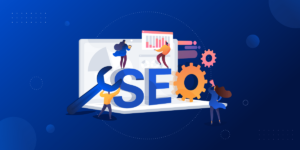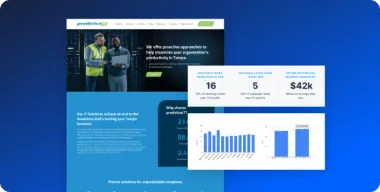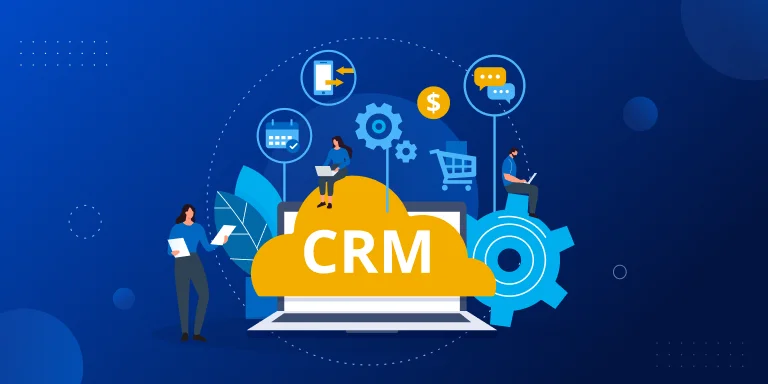Quick Decision Checklist
- Core Service Assessment: Is the service central to your business offering?
- Resource Availability: Can you efficiently find or build in-house skills?
- Budget Considerations: Do you prefer predictable internal costs or variable outsourced expenses?
- Timeline Requirements: Do you need immediate service capacity, or can you afford ramp-up time?
Every growing agency eventually faces a critical decision point: build internal teams or partner with outside experts. As someone who’s been on both sides of this equation, I can tell you there’s no one-size-fits-all answer. But there is a framework for making the right choice for your agency.
Throughout my years at Pronto and as a coach with Agency Mavericks, I’ve navigated the complexities of staffing strategies and have learned firsthand how impactful these decisions are. Here, I’ll share our experiences at Pronto and the key factors you need to consider so you can confidently determine which model suits your goals.
The Realities of Agency Growth: Key Statistics
When your agency grows, the choice to hire internally or outsource can become a make-or-break decision. Consider these stats:
- 67% of staffing firms in 2023 report difficulties finding skilled candidates. This talent shortage highlights the challenge of building capable in-house teams, particularly in specialized niches.
- Despite these obstacles, 49% of marketing agencies saw revenue increases of 25% or more in the past year, emphasizing that growth is attainable, even amidst challenges.
These figures illustrate a balancing act: managing growth while tackling staffing obstacles. Let’s dive deeper into how to weigh these options.
1. Understanding the Real Cost of Both Options
Before you decide between hiring in-house or outsourcing, it’s crucial to have a realistic understanding of the total investment each option involves, and not just the obvious expenses, but also the hidden, long-term costs.
In-House Costs |
Partner/Outsourcing Costs |
|---|---|
|
Direct Costs:
|
Direct Costs:
|
|
Hidden Costs:
|
Hidden Costs:
|
In-House Costs |
|---|
|
Direct Costs:
|
|
Hidden Costs:
|
Partner/Outsourcing Costs |
|---|
|
Direct Costs:
|
|
Hidden Costs:
|
When evaluating costs, agencies often underestimate the hidden expenses involved in each staffing model. For example, bringing expertise in-house isn’t just about salary — it involves significant upfront investment in training and ongoing management oversight. Similarly, outsourcing isn’t simply paying a monthly retainer — it’s managing the relationship, integrating systems, and ensuring consistent quality.
2. The 5 Critical Decision Factors
I’ve often observed agency leaders struggle when deciding whether to expand their teams internally or seek external partners. While there’s no definitive “best option” that fits every situation, I’ve developed a strategic framework that clarifies this decision-making process.
Each factor in this framework helps you pinpoint exactly which areas of your business are best suited to either in-house talent or outsourced partners.
Here’s the breakdown of the five critical factors your agency must evaluate:
1. Service Delivery Consistency
How critical is consistency to your client satisfaction?
- Outsourced partners can bring immediate expertise but may require additional oversight to meet your brand’s service standards.
- In-house teams, once properly trained, offer reliable control over processes and client interactions, ensuring consistent delivery aligned with your agency’s core values.
2. Financial Flexibility
How will your decision affect your financial agility?
- In-house hiring involves fixed, long-term financial commitments. You’re investing in salaries, benefits, and overhead, which can impact your cash flow and financial flexibility.
- Outsourcing often provides more scalable and adjustable expenses, allowing you to expand and contract quickly in response to market demands or business fluctuations.
2. Speed to Market
What’s your timeline for delivering results?
- When speed matters, partnering with external experts allows quicker deployment of new capabilities, significantly shortening the lead time from idea to execution.
- Building in-house teams often involves a slower onboarding period, but it can create long-term value through internal skill-building and smoother workflow integration down the road.
3. Quality Control Requirements
How tightly do you need to control your agency’s output quality?
- In-house teams inherently provide tighter control, essential when delivering highly sensitive or brand-critical projects.
- Effective outsourcing requires establishing clear service level agreements (SLAs), regular quality checks, and a structured process to ensure consistent quality.
4. Core Competency Alignment
How closely does the service align with your agency’s long-term strategic vision?
- If the service aligns closely with your core competencies or strategic vision, building an internal team preserves institutional knowledge and enhances your long-term competitive edge.
- For ancillary services outside your core focus or highly specialized areas (like sophisticated Google Ads management or specialized Link Building), outsourcing can quickly add value without distracting your core team.
5. Financial Flexibility and Risk Management
How do you manage financial risk and ongoing investments?
- Hiring internally involves significant upfront investments, such as recruitment, training, equipment, and benefits. There’s inherent risk if projects or market demand changes unexpectedly.
- With outsourcing, risks are more manageable due to the lack of long-term commitment and flexible service structures, though trade-offs can include dependence on external resources or the possibility of higher communication overhead.
Considering these factors carefully allows you to pinpoint the strategy that best fits your agency’s objectives, resources, and growth trajectory.
3. When to Choose In-House Teams
Deciding to bring services in-house is a significant investment, but it’s also a powerful way to solidify your agency’s foundation for long-term growth. I’ve learned that certain situations clearly favor building internal teams. Recognizing these key indicators early can position your agency to harness deeper brand alignment, cultivate specialized expertise, and retain invaluable institutional knowledge.
Here’s how you can determine whether investing in your own team is the right strategic move for your agency:
- The service is central to your core offering
- You require deep brand and cultural alignment
- Long-term knowledge retention is crucial
- Workflow and revenue streams are predictable and stable
Real-World Example: Pronto’s Blogging Service Launch
At Pronto, when launching our blogging service, we experienced firsthand the benefits and challenges of going in-house.
Many clients asked us to write customized blogs, prompting us to launch this new service. Initially, our in-house editorial team focused on web page copy, limiting our capacity for blog articles. So, we started flexibly by hiring freelance writers. As the service gained traction and we secured steady recurring revenue, we transitioned to an outsourcing agency to ensure consistent output.
Finally, when we knew the service was sustainable long-term, we converted these outsourced team members into full-time employees, ensuring long-term brand alignment and knowledge retention. This strategic approach helped us scale smartly and sustainably.
4. When Outsourcing Makes More Sense
Now conversely, sometimes the smartest move for your agency is partnering with specialized external experts. Whether you’re expanding quickly, facing fluctuating workloads, or entering highly competitive markets, outsourcing can offer agility, cost efficiency, and quick access to niche expertise that would otherwise be difficult to build internally.
Here’s how you can recognize scenarios when outsourcing makes the most strategic sense for your agency:
- Specialized expertise is needed quickly
- Workload fluctuates significantly
- Cost-efficiency is paramount
- Rapid scaling is required
5. The Hybrid Approach: Best of Both Worlds
Many agency owners mistakenly see the staffing decision as purely binary — either fully in-house or fully outsourced. But there’s a powerful third option: the Hybrid Approach.
A hybrid model allows you to keep core, strategically vital functions in-house, while outsourcing specific tasks or projects that require niche skills or flexible capacity. It’s a best-of-both-worlds solution, providing your agency the control you want and the flexibility you need.
Now, consider how this could work for your agency:
Structure and Strategy
- Core services handled by internal teams
- Specialized or supplemental services outsourced
- Clear resource allocation and integration strategies
Implementation Framework
- Clearly defined criteria and transition planning
- Ongoing performance monitoring and communication protocols
- Regular evaluation against success metrics
Expert Tips from My Experience
- Start small: Test the waters with freelance help before building internal teams.
- Always clearly define expected outcomes and deliverables in outsourcing agreements.
- Prioritize quality control and communication, regardless of your staffing model.
6. A Step-by-Step Guide to Shifting Your Staffing Strategy
Having decided between building an internal team, outsourcing, or embracing a hybrid model, the next critical stage is managing the transition effectively. At Pronto and in my coaching at Agency Mavericks, I’ve repeatedly seen agencies struggle with execution. Here’s a practical, structured approach I’ve successfully used and recommend for any agency looking to transition smoothly between in-house, outsourced, or hybrid staffing models.
Step 1: Assessment Phase
Before implementing any significant staffing shift, you must fully understand your current capabilities, identify your future needs, and pinpoint the gaps. This clarity helps you create a targeted and realistic transition plan.
Current Capability Audit: Assess your existing internal team’s skills, experience, and resources, including tools, software, and processes.
Future Needs Projection: Clearly define future business goals. Consider growth targets, new service offerings, or expansion plans that will impact staffing needs.
Resource Availability Analysis: Determine your local talent availability, the cost-effectiveness of training current employees versus hiring or outsourcing, and your existing infrastructure’s capacity to scale.
Gap Identification: Clearly document discrepancies between your current state and where you need to be. This step will help you precisely identify skills or resources you need externally or internally.
Step 2: Structured Implementation Process
To minimize disruption and maximize success, it’s wise to gradually transition. At Pronto, for example, when we launched our blogging service, we initially outsourced content creation before fully integrating a dedicated in-house team.
Pilot Program Design
Start with a small, manageable project to test your chosen staffing approach, control risks, and collect measurable outcomes before scaling up.
Example:
When we launched Pronto’s blogging service, we first used freelance writers. After validating demand and workflows, we gradually transitioned to an outsourced team, and eventually brought the entire service in-house.
Communication Strategy
Effective internal communication reduces friction and fosters buy-in from your team.
Recommended actions:
- Clearly outline roles and expectations to both internal and external teams.
- Hold regular check-ins or update meetings to keep everyone aligned.
- Establish centralized platforms (e.g., Slack, Trello, or Asana) for clear, continuous communication.
Step 3: Performance Tracking Systems
Reliable data-driven tracking and reporting is essential. Establish systems to continually evaluate whether your new staffing strategy delivers expected benefits.
- Clearly outline your KPIs (e.g., turnaround time, customer satisfaction scores, revenue generated).
- Use analytics tools and dashboards to regularly monitor results, keeping both your internal and external teams accountable.
- Set regular review intervals (e.g., weekly and monthly meetings) to discuss insights and refine your strategy.
Best Practices for a Successful Transition
At Pronto, I’ve observed several key factors that consistently lead to successful transitions between staffing models:
- Clear and proactive communication: Keep your teams (internal and external) aligned through regular updates and transparent expectations.
- Controlled roll-out: Start small and build confidence before expanding your investment.
- Adaptability and iteration: Don’t hesitate to pivot if your pilot program indicates that changes are needed. Maintain flexibility and be ready to adjust your approach based on what you learn.
Expert Note
Don’t forget the vetting process. This applies to both vetting outsourcing agencies by reviewing case studies and talking to references as well as in-house staff by having a robust interview process. Making sure you select
the right vendor/team member is critical to the success of any strategy.
7. Risk Management and Quality Control
Your agency must proactively manage common pitfalls and put effective quality control processes in place. Doing so ensures that your service quality remains consistently high and your client relationships thrive throughout the change.
Let me first identify some of the most frequent pitfalls and then outline proven strategies to overcome them.
Common Pitfalls to Anticipate
From firsthand experience, these are the main obstacles you’ll likely encounter during a staffing transition:
❌ Communication Breakdowns: Information silos, unclear expectations, or insufficient communication between teams can quickly derail quality and client relationships.
❌ Quality Inconsistencies: Without clearly defined standards, external partners or new hires may fail to deliver consistent work quality, impacting client satisfaction and trust.
❌ Cultural Misalignment: Different work styles, expectations, or values between in-house teams and external providers can cause friction, inefficiency, and lower morale.
❌ Resource Dependencies: Over-relying on a single provider or individual internally creates bottlenecks, risk exposure, and jeopardizes service continuity if something goes wrong.
Mitigation Strategies: How to Stay Ahead of Risks
Here’s how your agency can proactively manage and mitigate these common risks effectively:
✅ Clear Service-Level Agreements (SLAs) and Expectations
Establish detailed SLAs or clearly defined internal standards for every aspect of your service delivery.
Best Practices:
- Clearly document quality benchmarks and expectations.
- Include measurable KPIs such as response times, delivery standards, turnaround requirements, or accuracy metrics.
- Regularly review these agreements and expectations with your team or partners to reinforce alignment.
✅ Regular Performance Reviews and Check-ins
Continuous evaluation keeps everyone aligned and ensures quality stays consistent.
Best Practices:
- Schedule structured weekly or monthly meetings with your internal or external teams.
- Share open, transparent feedback regularly — don’t wait for annual reviews.
- Use these discussions to identify improvement areas early, allowing timely course correction.
✅ Backup Plans and Redundancies
Plan for contingencies by establishing backup resources or cross-training team members.
Best Practices:
- Never allow your agency to depend solely on a single external provider or team member.
- Develop backup plans for critical tasks (e.g., additional freelancers, alternate partner agencies, internal cross-training).
- Test your redundancy systems periodically to ensure they’ll work effectively in practice.
✅ Robust Client Communication Protocols
Ensure your clients are consistently informed about your transition and how it benefits them.
Best Practices:
- Be transparent with clients about changes and manage their expectations clearly.
- Share regular progress updates, emphasizing your commitment to improving service quality.
- Solicit client feedback proactively to monitor satisfaction and address potential issues early.
Conclusion: Choosing the Right Staffing Path for Your Agency’s Long-term Success
Over my years at Pronto Marketing and working alongside agency leaders through Agency Mavericks, I’ve witnessed firsthand how choosing the right staffing model can significantly influence an agency’s growth trajectory. Whether you’re building an internal team, leveraging external partners, or adopting a hybrid approach, each model carries unique benefits, risks, and implications.
There’s no universally “correct” staffing choice, only the choice that’s right for your agency’s specific situation and strategic ambitions.
But by following a structured decision-making framework — evaluating service delivery consistency, financial flexibility, speed-to-market, quality control, and core competency alignment — you can confidently determine the optimal staffing model to power your agency’s growth.
As you embark on this journey, keep these essential points in mind:
Start Small and Test the Waters: Pilot your approach to verify demand, minimize risk, and gather valuable insights before scaling up.
Prioritize Clear Communication: Openly engage with your internal team, external partners, and clients every step of the way, to build trust and ensure alignment.
Implement Rigorous Quality Controls: Define clear standards, regularly review performance, and continuously improve to deliver consistently excellent results.
Embrace Adaptability: Don’t be afraid to iterate or pivot your strategy. Remaining agile lets you respond quickly to evolving market conditions and client needs.
Ultimately, choosing between hiring internally, outsourcing, or implementing a hybrid model is about building a team structure that aligns closely with your agency’s goals and sets you up for sustainable, long-term success.
If you’d like to explore this further, I’m always happy to share more of my experiences at Pronto or discuss your specific staffing challenges. Feel free to book a call with me.




